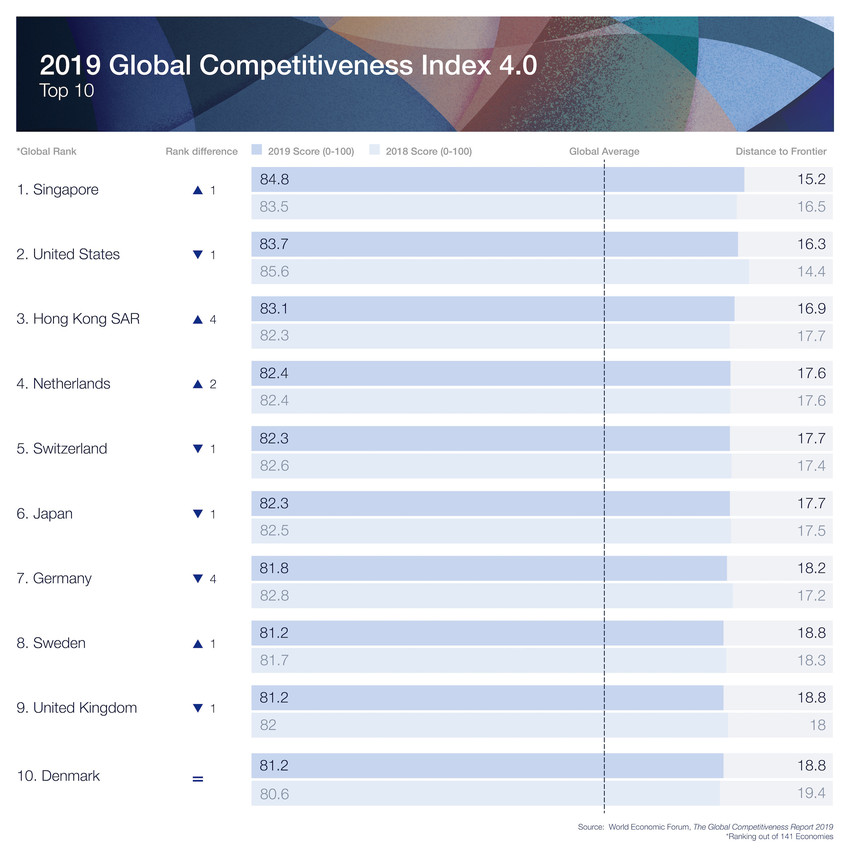Singapore has overtaken the United States (US) to top the Global Competitiveness Index 2019, which is compiled by Geneva-based World Economic Forum (WEF).
Meanwhile, US slipped to the second position, with Hong Kong SAR (3rd), Netherlands (4th) and Switzerland (5th) rounding up the top five in the ranking of 141 countries.
India moved down 10 places to rank 68th this year, losing ground in the rankings despite a relatively stable score. This was mostly due to faster improvements by several countries previously ranked lower.
With a score of 84.8 out of 100, Singapore is the country closest to the frontier of competitiveness. The little red dot ranks first in terms of infrastructure, health, labour market functioning and financial system development.
While the US may have lost out to Singapore overall, it remains an innovation powerhouse. The economic powerhouse ranked first on the business dynamism pillar, second on innovation capability, and first for finding skilled employees.
Going forward, in order to become a global innovation hub, Singapore will need to promote entrepreneurship and further improve its skills base, the index added.
The United Kingdom fell one place to ninth while the United Arab Emirates emerged as the leader in the Arab world for the 4th consecutive year coming in at number 25. The UAE saw an improvement in 52 out of 103 indicators.
Asia-Pacific was deemed to be the most competitive region in the world, followed closely by Europe and North America.
Launched in 1979, the Global Competitiveness Report provides an annual assessment of the drivers of productivity and long-term economic growth.
The index maps the competitiveness landscape of 141 economies through 103 indicators organised into 12 themes. Each indicator, using a scale from 0 to 100, shows how close an economy is to the “frontier” of competitiveness. The pillars cover broad socio-economic elements like: institutions, infrastructure, ICT adoption, macroeconomic stability, health, skills, product market, labour market, the financial system, market size, business dynamism and innovation capability.




